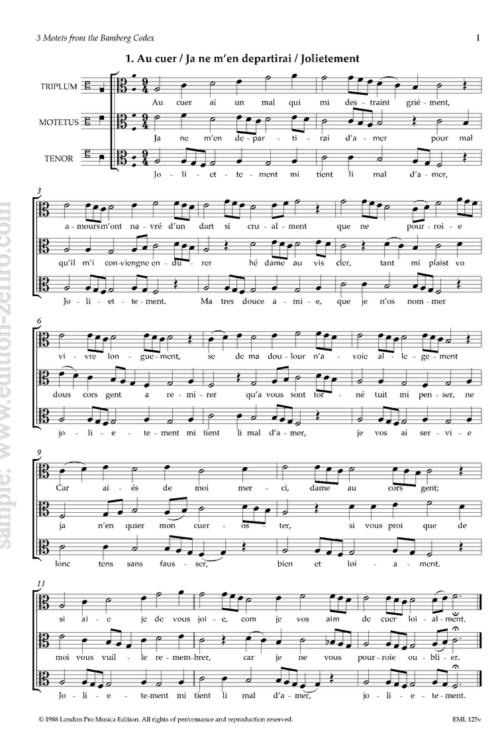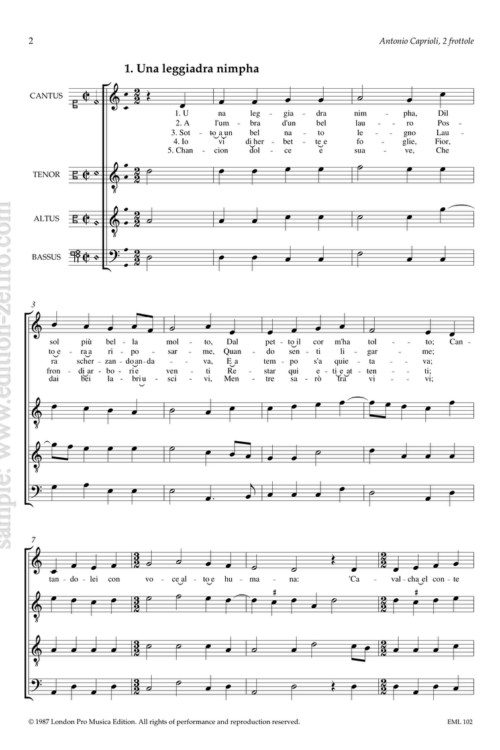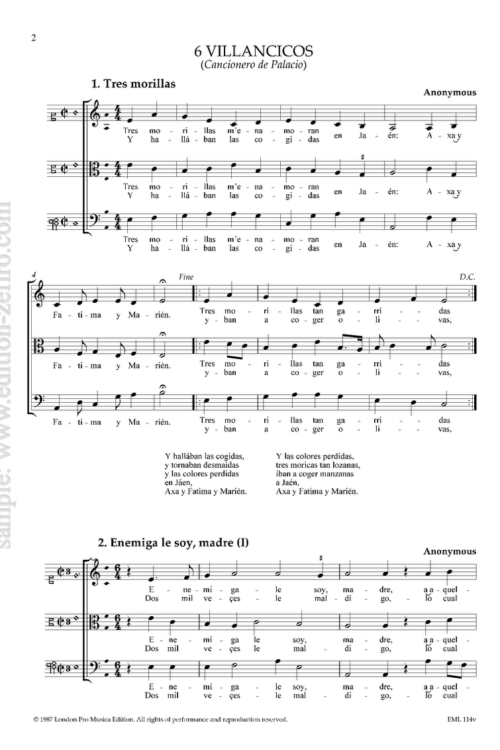Lappi, who worked mostly in Brescia, composed a set of canzoni in from 4 to 13 parts. This one is in 9 parts.
Printed after Pietro Lappi’s Canzoni da suonare di Pietro Lappi, Maestro della Musica di Sant Maria delle Grazie di Brescia. à4. 5. 6. 7. 8. 9. 10. 11. 12 & 13. Libro Primo… Opera Nona, (Venice, 1616).
Lappi’s collection is unusual in providing examples of double-choir pieces for odd numbers of instruments, i.e. 7, 9, 11 and 13, as well as the more usual 8, 10 and 12. Another striking feature is some Canto parts with remarkably high tessitura, especially in his 10-part piece. This may be connected with the fact that he worked at Brescia, the first centre of violin making (before Cremona); in this context it is interesting that Viadana’s 8-part sinfonia named after that city (ADC 15 ↣ ) also has upper parts with a high tessitura. It may be that the combination of high violins and trombones was a local speciality.
We have already included some of Lappi’s unusual pieces in this series: the 7-part canzone (ADC 22 ↣ ), and the 13-part canzone (ADC 31 ↣ ).






